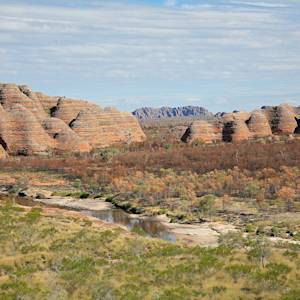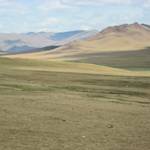Mitchell Grass Downs
2023 CE • northeastern Australia
The Mitchell grass downs is a vast ecoregion spanning over 1.5 million kilometres in Queensland, Australia. It is dominated by distinct Mitchell grass (Astrebla spp.), a hardy, wiry tussock grass species that are highly adapted to the area's climate. Dotted throughout the region are other shrub and tree species that mainly grow close to watercourses. "Pronounced variation in seasonality and rainfall are hallmarks of this ecoregion that transitions the drier interior of the continent to the humid lowlands of the northeast. Migratory waterbirds and shorebirds occasionally flock to ephemeral lakes after heavy rains." The downs is home to a diverse array of animal life from endemic reptiles (such as the gecko Gehyra minuta) and 75 species of mammals such as the Carpentarian Antechinus and the long-tailed planigale. "The ecoregion has the largest range of the endangered night parrot, one of the most elusive and mysterious birds in the world." While the Mitchell grass downs remains relatively intact, it is threatened by several ecological issues. Overgrazing from introduced livestock has led to soil erosion and degradation of the vegetation. Additionally, invasive plants species like the Prickly acacia and buffel grass, often distributed by cattle, outcompete native species.
Quote: David Olson, "Mitchell Grass Downs," One Earth. National Landscapes Program, "Mitchell Grasslands of the Channel Country," Department of the Environment, Water, Heritage and the Arts, Australian Government, 2010.
Image: Mark Marathon, CC BY-SA 4.0, via Wikimedia Commons


Learn about Maya Lin’s fifth and final memorial: a multi-platform science based artwork that presents an ecological history of our world - past, present, and future.

Discover ecological histories and stories of former abundance, loss, and recovery on the map of memory.

Learn how we can reduce our emissions and protect and restore species and habitats – around the world.

See how art can help us rethink the problems we face, and give us hope that each one of us can make a difference.

Help make a global memorial something personal and close to home. Share your stories of the natural world.


